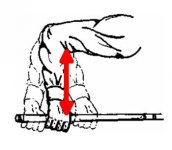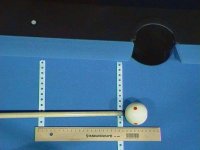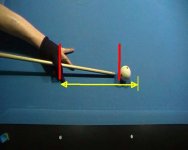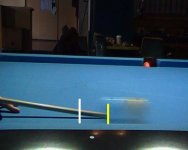I would say leave your bridge where it feels natural. It has a lot to do with how long your arms are in comparison to how long the trunk of your upper body is and also your vision.
Some of the BEST players in the world have a long bridge.This includes Efren Reyes, Francisco Bustamante, Earl Strickland, Ralf Souquet. Alex Pagulayan. Just to name a few.
I would say just slow down your back swing , keep your head down and stroke smoothly through the ball.. you'll be fine!
Some of the BEST players in the world have a long bridge.This includes Efren Reyes, Francisco Bustamante, Earl Strickland, Ralf Souquet. Alex Pagulayan. Just to name a few.
I would say just slow down your back swing , keep your head down and stroke smoothly through the ball.. you'll be fine!
I've been trying shorten my bridge lately because it's pretty long and I think i can be more consistent with a position closer to the CB.
The problem is every time I slide my bridge closer to the CB, it feels awkward as hell. I have a pretty long stroke and when I get close, it feels like I'm poking the CB instead of coming through it smoothly.
Long story short.... I play a few racks with a shorter bridge but then I revert back to my old style when I get frustrated that I'm not playing as well as I should be.
For me, this is a HARD adjustment / transition to make!! Do any of you have advice on being successful with a shorter bridge? My bridge is almost Bustamante-long and it's prob unnecessary.
Let me know how to get over this hump?
Thanks,
Dave



